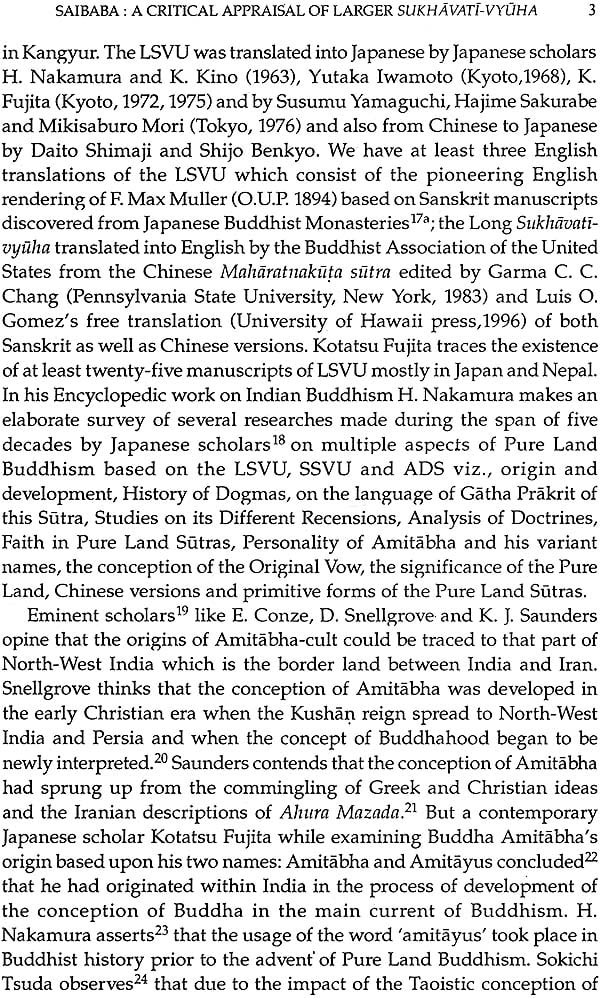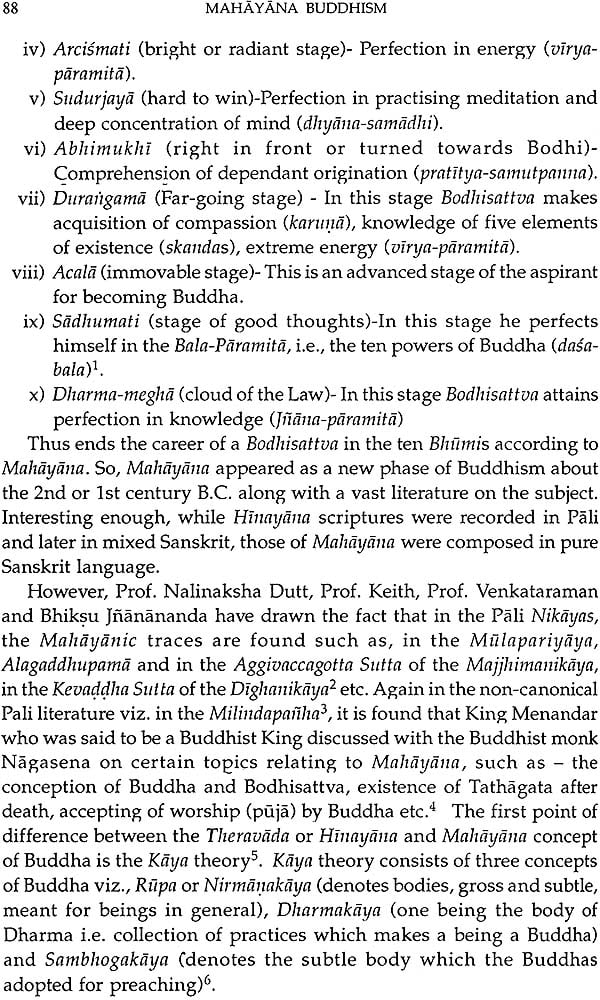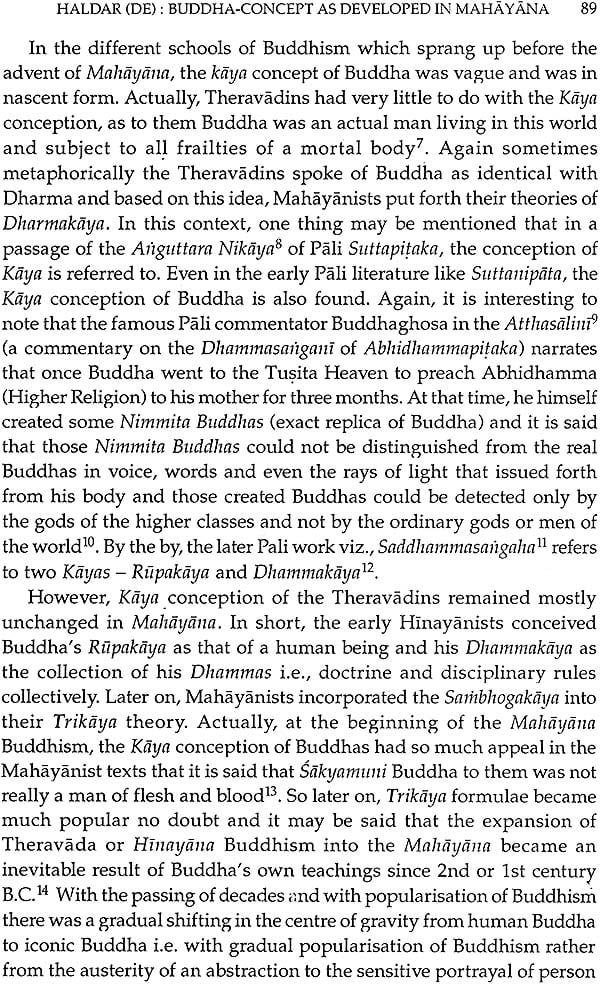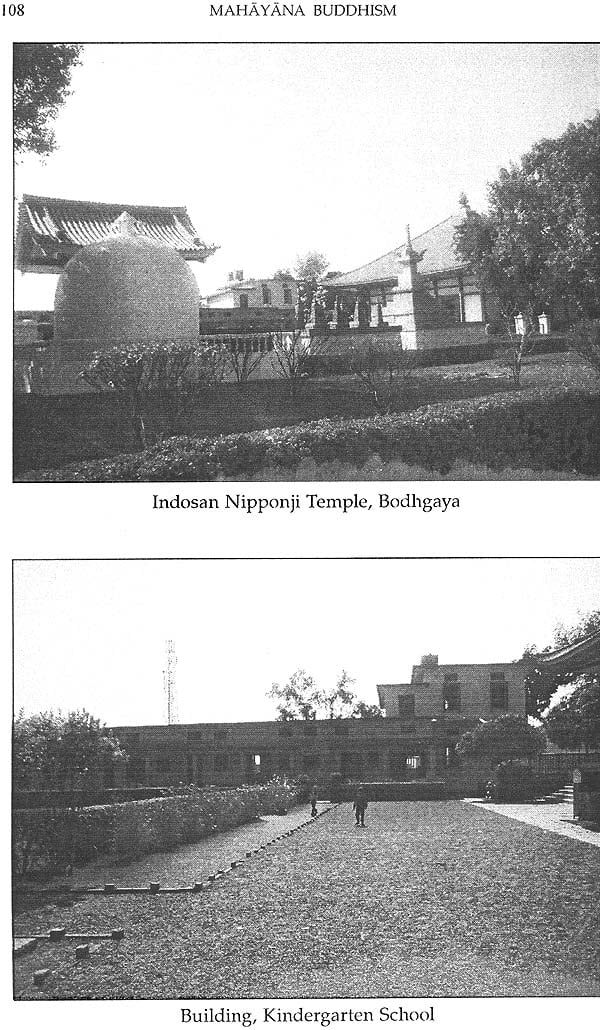
Mahayana Buddhism ( Literature, Language and The Ramification)
Book Specification
| Item Code: | NAL732 |
| Author: | Sadhan Chandra Sarkar |
| Publisher: | The Asiatic Society |
| Language: | English |
| Edition: | 2014 |
| ISBN: | 9789381574201 |
| Pages: | 132 (15 B/W Illustrations) |
| Cover: | Paperback |
| Other Details | 9.5 inch x 6.0 inch |
| Weight | 230 gm |
Book Description
The Mahayana Buddhism: Language, Literature and the Ramification is one of our recent prestigious publications containing eleven scholastic articles that were presented at the National Seminar, held in February, 2010, organised by the Asiatic Society, Kolkata. The papers have been divided into two categories - some on textual studies of the Mahayana ideals and the rest includes variegated schools of Mahayana Buddhism, Mahayana arts and archaeological remains, impact of the Mahayana Buddhism on modern society and such other topics. The present collection may be considered as a sequel to the work entitled Introducing Mahayana Buddhism published by the Asiatic Society a few years back. The present collection of papers has been edited with a highly informative Introduction by our esteemed friend, a renowned Pali scholar Dr. Sadhan Chandra Sarkar, who was the former Head, Department of Pali, Sanskrit College, Kolkata. The present literary production, though small in size, will certainly be a very useful text for students interested in Buddhistic studies as well as of Indology.
The present work is a collection of papers read at the National Seminar held on the 18th and 19th February, 2010, on the subject 'Mahayana Buddhism - Literature, Language and the Ramification', at the Asiatic Society, Kolkata.
We express our deep regret for not assembling all the articles read at the Seminar for not receiving those from the delegates of the said Seminar. However, the articles compiled here reveal the prisms of the Mahayana Buddhism to the readers.
In arranging articles we have first placed those which are on textual studies of the Mahayana-ideals, The rest are discussions on critical studies on the genesis, rise of various schools, which contributed to the ramification of the Mahayana philosophy or ideals, Mahayanic arts, archaeological remains, impact of Mahayana on the modern society and so on.
In this connection we take the advantage of reminding of a publication entitled Introducing Mahaya1la Buddhism under the joint editorship of Professor Biswanath Banerjee, and Professor Sukomal Chaudhuri, published by the Asiatic Society, Kolkata. The scholars interested in Buddhistic studies as well as of Indology might know in details on Mahayana Buddhism, its origin, schools, ideology, literature, language, arts etc. from this volume.
The dogmatic Buddhism is, generally, known as Hinayana (Theravada) or Sravakayana Buddhism, and in course of time, after the Mahaparinirvana (the Great Decease) of the Lord Buddha: new ideas developed, the seeds of which are found in the Pali and Sanskrit Canonical literature specially at the time of Kaniska and post-Kaniska age. The devotional attitude towards Buddha and his deification are gradually being noticed in the literature written in Sanskrit, better to say, in Buddhist Sanskrit language. The texts of these periods extensively reveal a developed philosophy or theory of Buddhism which came to rescue the people in general with the institution of the various ideals of Buddhism like 1) the conception of Bodhisattva, 2) the development of Bodhicitta, 3) the goal of Buddhahood, 4) the practice of Paramita, 5) Trikaya theory of the Buddha, 6) the ten stage? (Dasabhumi) of spiritual development, and 7) the concept of Dharmasunyata or Tathata and Buddhalogy etc. These are all the Mahayanic touchstones or characteristics of Buddhism. Besides the Buddhist Sanskrit, the Hybrid Sanskrit and even Prakrt language were used as the medium to preach the Mahayana thoughts in its early stage. Later on with the contact of the foreigners some of the Buddhist Mahayana literature got to be rendered in Chinese, Tibetan and other languages by the scholars or pundits of the then age. Thus the Mahayana did assist in orienting the social thoughts and beliefs both in India and abroad. Moreover, the advent of the iconic representation of the Buddha and Bodhisattva-figures, Stupas, Caityas, and munificent archaeological shrines and constructions etc. accelerated globally the growth of Buddhist Art.
Further a band of scholars and pundits did flourish the Mahayana literature by their intellectual compositions from the 1st century A.D. to 12th century A.D. even. To mention some of them are Nagarjuna, Vasubandhu, Aryadeva, Dinnaga, Dharma Kirti, Kumarila Bhatta, Santaraksita, Kamalasila, and others. The Madhyami ka and Vijananavada schools of the Mahayana are immensely rich with the contribution of the above noted teachers. The esoteric Buddhism seems to be an appropriate mode of expressing the significance and essential characters of the Buddhistic Tantras. 'Tantric Buddhism is the last phase of Buddhism in India. The origin of which (Tantric) is wrapped up in obscurity'. It is generally held that the Tantric Buddhism is a mystic development from the Mahayana.
In no way the impact of Mahayana theology be ignored in the religious and social life and behaviours of Indian culture which was culminated in the Vajrayana, Mantrayana, Tantrayana, Kalacakrayana, Sahajayana of the later age.
We are indebted to scholars and delegates who attended this Seminar and made it fruitful one by their participations in their discussions and contributions of papers.
In spite of our earnest endeavour there may be some lapses which have crept into the book due to inadvertence. We crave the indulgence of the readers for these printing errors. I am also grateful to Professor Manabendu Banerjee, General Secretary of the Asiatic Society, Kolkata, for helping us in all respect to edit this volume. In fine, I express my deep indebtedness to my recently deceased teacher Professor Biswanath Banerjee, former President of the Asiatic Society, Kolkata, for rendering me valuable suggestions to edit this work. Thanks are also due to Professor Pallab Sengupta, former President of the Asiatic Society, Kolkata, for his genuine interest, to get this work published.
| Foreword | v |
| Editorial Note | vii |
| A Critical Appraisal of Larger Sukhavati- Vyuha | 1 |
| Sautrantikas Paving the Path to Mahayana | 17 |
| The Mahavastu-avadana Forming the Genesis of | 26 |
| Mahayana Buddhism | |
| Mahakarmavibhanga - A Unique Analysis of | 32 |
| the Karma-theory of Buddhism | |
| Mahayana Buddhism : A Study in its Development | 41 |
| Reappraisal of Origin of Mahayana, Relation of Mahayana | 51 |
| to Hinayana | |
| Reality, Pratityasamutpada and Relation in Mahayana Philosophy | 69 |
| Buddha-concept as Developed in Mahayana | 87 |
| Origin of Mahayana Buddhism | 96 |
| A Note on Some Interesting Stucco Heads of Kunala | 102 |
| from Gandhara in the Indian Museum Collection | |
| Mahayana in Socially Engaged Buddhism - A New Approach | 105 |
| Contributors | 124 |














